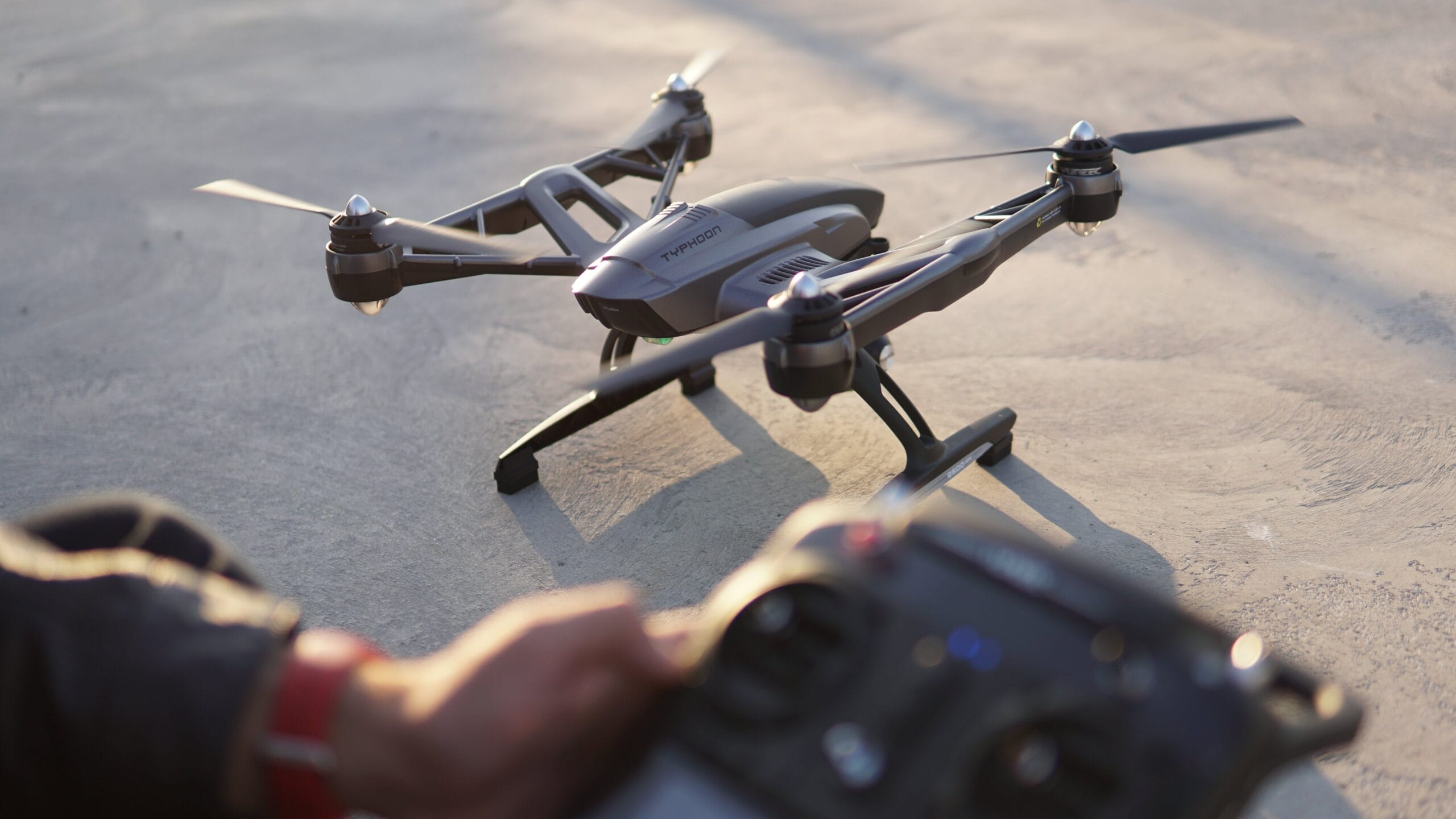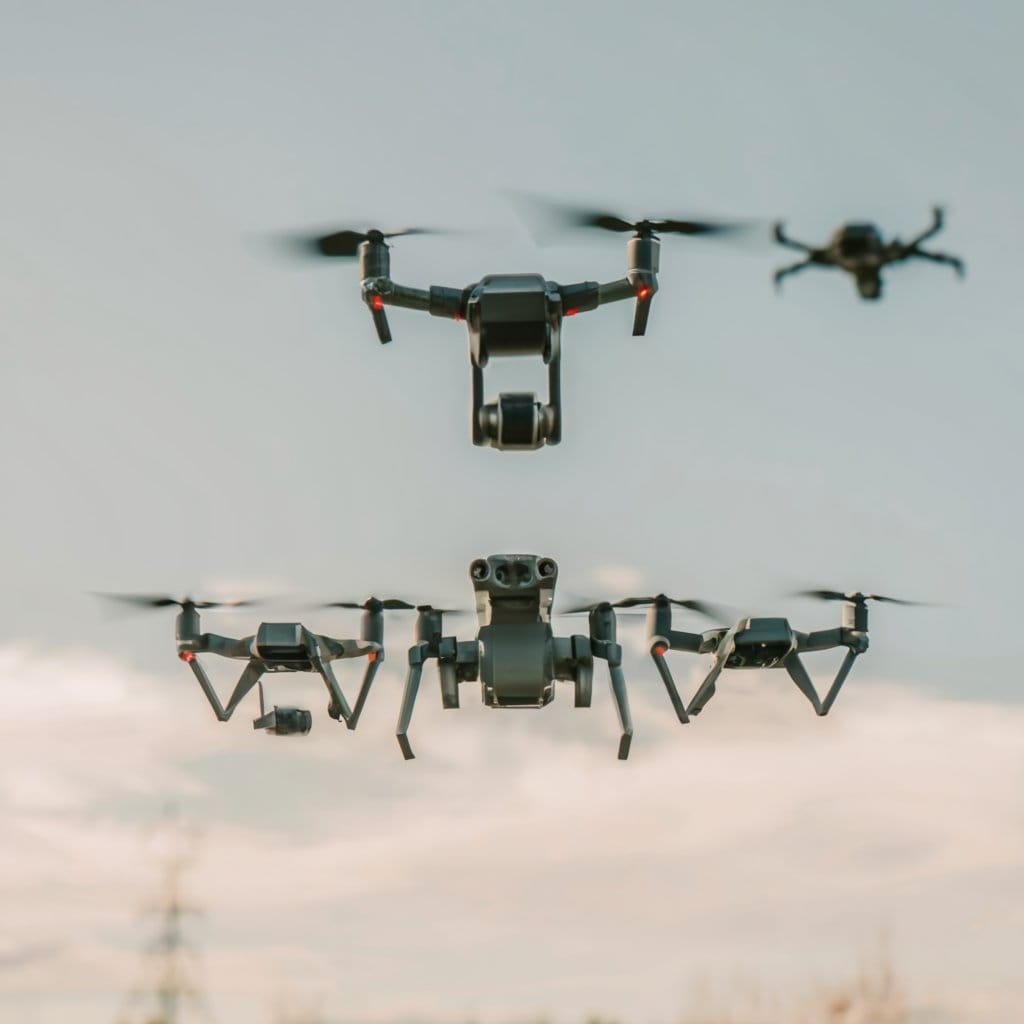Did you know that only around 1% of all drone pilots in the U.S. hold a Part 107 drone license? If you want to join this exclusive club and elevate your drone piloting skills, obtaining your Part 107 certification is the way to go.
FAA Part 107 Regulations and Applicability
Commercial Drone Operations
Part 107, also known as the, governs commercial drone activities in the United States. It sets rules for operating drones commercially.
Drones weighing less than 55 pounds fall under the purview of Part 107. This weight limit ensures that small to medium-sized drones comply with these regulations.

Remote Pilot Certificate
Pilots must obtain a remote pilot certificate to conduct commercial operations using a small unmanned aircraft per FAA Part 107 requirements. This certification demonstrates knowledge of airspace regulations and safety protocols.
- The certificate is crucial for those wanting to offer aerial photography or inspecting infrastructure services as a certified drone pilot for commercial drone operations.
- Individuals cannot legally engage in commercial drone activities without this FAA remote pilot certificate.
Requirements for Small Unmanned Aircraft Certification
Age Requirement
To obtain a Part 107 drone license, pilots must be at least 16 years old. This age requirement ensures that operators have the necessary maturity and responsibility to safely handle small unmanned aircraft systems.
TSA Background Check
A crucial step in acquiring a remote pilot certificate is passing a Transportation Security Administration (TSA) background check. This vetting process ensures that pilots do not pose any security risks when operating drones commercially.
Completing an FAA-Approved Aeronautical Knowledge Test is another prerequisite for obtaining a small unmanned aircraft certification. This test assesses an individual’s understanding of key aviation concepts, regulations, and safety procedures related to flying drones under Part 107 guidelines.
Step-by-Step Guide to Obtaining a Part 107 License
Create an Account on IACRA Website
To begin obtaining your Part 107 drone license, you must create an account on the FAA’s IACRA website. This online portal is where the applicant will submit their application for a remote pilot certificate after passing the necessary tests.
Submitting your application through the IACRA system allows for a more streamlined and efficient process for applicants compared to traditional paper applications. The applicant can access all the necessary forms and compliance requirements by creating an account in one centralized location.
Schedule & Pass Knowledge Test
After setting up your IACRA account, the next step is to schedule and pass the knowledge test for a remote pilot certificate at an FAA-approved testing center. This test covers essential topics such as airspace regulations, weather patterns, emergency procedures, and flight operations specific to drones.
Passing this exam demonstrates your understanding of key concepts related to safe drone operation within national airspace. Once you successfully complete this test, you are one step closer to obtaining your Part 107 drone license.
Cost, Duration, and Eligibility for the FAA Drone License
Knowledge Test Fee
To obtain a Part 107 drone license from the FAA, you need to pay a knowledge test fee of approximately $150. This fee covers the cost of taking the exam that assesses your understanding of airspace regulations, safety procedures, and other essential topics related to operating drones commercially.
The knowledge test is a crucial step in obtaining your commercial drone pilot license as it ensures that you have the necessary expertise to operate drones safely and responsibly. By investing in this fee, you are fulfilling a requirement and demonstrating your commitment to professionalism in drone piloting.
Certificate Validity and Recurrent Training
Once you pass the exam and receive your remote pilot certificate, your drone license will be valid for two years from the issue date. During this period, you can legally operate drones for commercial purposes. However, it’s important to note that recurrent training is required every 24 months to renew your license.
Engaging in recurrent training helps licensed pilots stay updated on any changes in FAA regulations or best practices within the flight industry. It is a refresher course to enhance skills and knowledge, ultimately contributing to safer operations and compliance with FAA guidelines.
Study Materials and Preparation for the Knowledge Test
FAA’s Remote Pilot Study Guide
The FAA’s Remote Pilot Study Guide is valuable for preparing for the part 107 drone license. It covers essential topics that are included in the knowledge test, providing detailed explanations and examples to aid understanding.
Online courses can be beneficial as they offer structured lessons, interactive materials, practice exams to assess your knowledge. These courses are designed to help you grasp key concepts effectively.
Practice with Sample Questions from the FAA
Practicing with sample questions from the FAA is crucial to familiarize yourself with the format of the knowledge test. By answering these questions, you can gauge your readiness and identify areas where you may need further review before taking the exam.
- Pros:
- Structured study materials available.
- Interactive online courses enhance learning.
- Practice tests help assess preparedness.
- Cons:
- Some online courses may have associated fees.
Registering Drones and Understanding Commercial vs. Recreational Use
Part 107 Drone License
To legally operate drones weighing over 0.55 pounds in the U.S., registration with the Federal Aviation Administration (FAA) is mandatory. A Part 107 certification is essential for commercial drone operations, allowing individuals to fly drones for business purposes.
Part 107 certification involves passing a knowledge test that covers airspace regulations, weather effects on flight, emergency procedures, and more. This certification distinguishes commercial drone pilots from recreational flyers by demonstrating their understanding of safe and professional drone operation and FAA guidelines.
Recreational vs. Commercial Use
Recreational use of drones has fewer restrictions compared to commercial purposes. While recreational pilots can enjoy flying drones for personal enjoyment without formal certification, they must still adhere to specific guidelines set by the FAA to ensure safety during recreational flights.
On the other hand, commercial drone operators must undergo training and obtain a Part 107 license before using drones for business activities such as aerial photography, surveying land, or inspecting infrastructure like bridges and power lines.
Tips for Passing the FAA Part 107 Knowledge Test
Airspace Regulations
Studying airspace regulations is crucial for passing the Part 107 drone license test. Know about controlled, uncontrolled, and special-use airspace. Understand different classes of airspace like Class B around significant airports and Class G in rural areas.
Review sectional charts to grasp restricted areas and altitudes where drones can fly legally. Learn about Temporary Flight Restrictions (TFRs) that may be in place due to emergencies or events. Being well-versed in compliance regulations may help you answer questions accurately on the exam.
Emergency Procedures
Emergency procedures are a significant part of the aeronautical knowledge test. Understand how to handle situations like lost link with your drone or encountering adverse weather conditions mid-flight. Familiarize yourself with crew resource management principles to ensure effective decision-making during emergencies.
Practice scenarios involving engine failures or unexpected obstacles while flying your drone commercially. Knowing how to react promptly and appropriately can make a difference during the test and when operating drones professionally.
Maintaining and Renewing Your Part 107 Certification
Recurrent Training
To maintain your Part 107 remote pilot certificate, completing recurrent training every 24 months is crucial. This training ensures that you are up-to-date with the latest regulations and safety guidelines to comply. You demonstrate your commitment to safe and responsible drone operation by staying current.
Completing recurrent training fulfills regulatory requirements and enhances your knowledge and skills as a certified remote pilot. It keeps you informed about any changes in rules or procedures that may affect your operations and compliance. By engaging in continuous learning as a remote pilot, you contribute to the overall safety of the national airspace system.
Staying Updated on Regulations
Staying updated on regulation changes is essential for maintaining your Part 107 certification. Awareness of amendments or new rules helps you operate within legal boundaries and avoid potential violations. Regularly checking for updates from the Federal Aviation Administration (FAA) ensures that you always comply with current standards.
Closing Thoughts
You’ve navigated the intricate skies of Part 107 drone licensing, uncovering the regulatory landscape, certification requirements, and exam strategies. Now equipped with the knowledge to soar through the process as a remote pilot, it’s time to take flight. Remember, diligence in preparation is your propeller to success. Stay focused on the goal and let your determination be the wind beneath your wings. As you embark on this journey towards obtaining your Part 107 remote pilot license, keep in mind that every hurdle is a stepping stone to greater heights. Embrace the challenge, study smart, and soon you’ll be cruising through the skies as a certified commercial drone pilot. The sky’s the limit—go claim your spot among the clouds!




Pingback: 10 Best Drones for Kids 2024: Ultimate Buyer's Guide